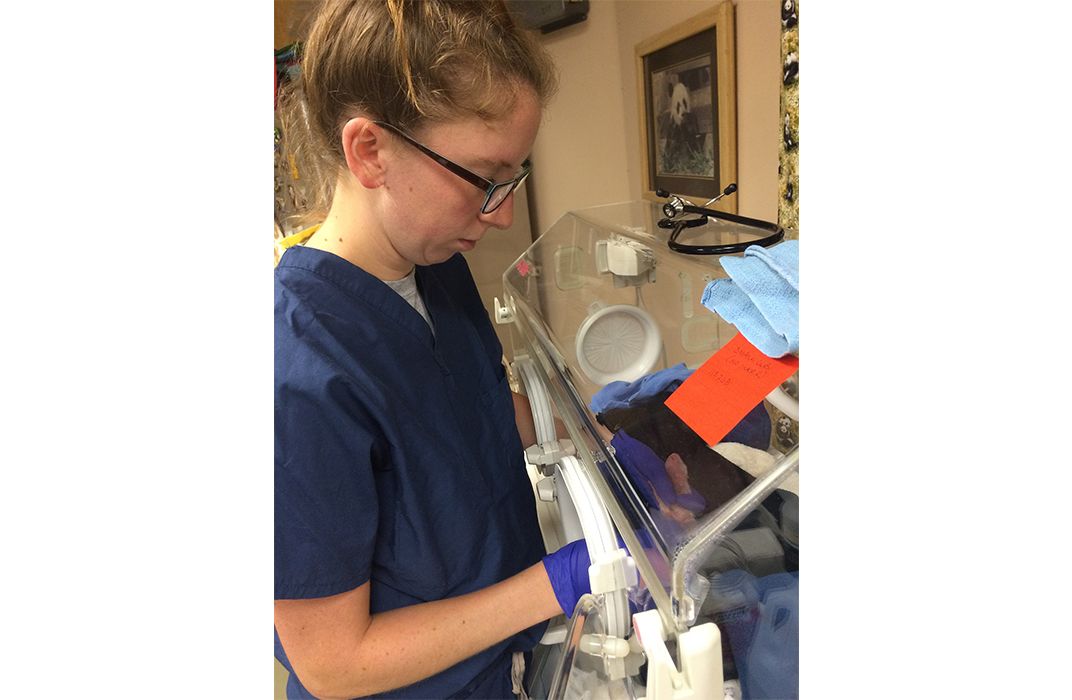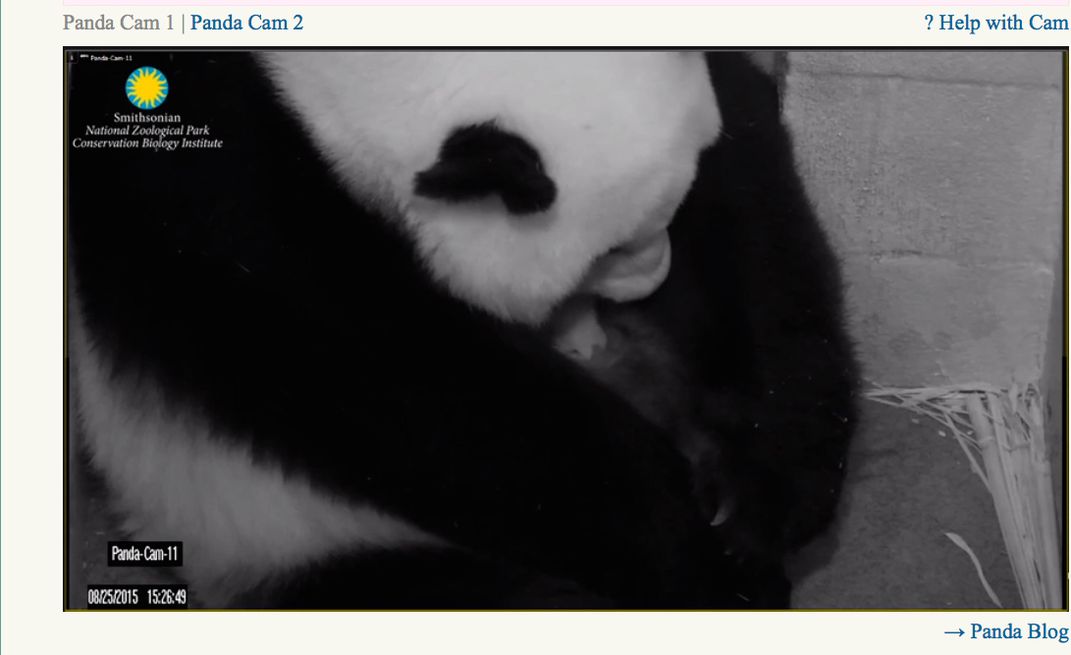Panda Update: Giant Panda Mom Mei Xiang Won’t Exchange Care of Cubs
Smaller cub is receiving infant formula and fluids from Zoo veterinarians
:focal(581x474:582x475)/https://tf-cmsv2-smithsonianmag-media.s3.amazonaws.com/filer/85/ab/85ab9b8e-9fbe-42e4-928a-f0eef8c5dcff/untitled-1.jpg)
After the excitement of the weekend births of the twin giant panda cub, the business of raising two tiny cubs is settling in at the National Zoo in Washington, D.C., as reinforcements arrived to help with the round-the-clock care. But it’s proving to be a tricky business. For one thing, mother panda Mei Xiang is being less than cooperative.
Zoo officials say she is not releasing one of her cubs to the panda keepers in exchange for the other. The protocol for caring for twins was developed after studying with Chinese panda biologists at the Woolong Breeding Center in the Sichuan Province. In the wild, the mother panda usually cares for just one cub and leaves the other to die.
Under the Zoo’s care protocol, the mother panda is encouraged to release one cub for the other by distracting her with high value items or a recording of the other cub’s calls. In this way, both cubs are able to take turns nursing and receiving the necessary care from its mother.
But Mei Xian is “not a willing participant,” instead she is keeping the larger cub with her. (At birth the larger cub weighed 138 grams with its twin measuring only 86 grams.)

The smaller cub’s weight 48 hours after birth is fluctuating and so the concern is that the tiny animal receives enough fluids and nutrients. So bottle and tube feeding is being administered to the cub, as well as antibiotics to prevent infections, even as the keepers continue to try every four hours to convince Mei Xiang to trade cubs.
The little cub is doing well—peeing and pooping and eating and keeping warm—and there are no signs that the animal is in respiratory distress—a major concern. Mei Xiang, who keepers say is a “good mother,” is taking excellent care of the larger cub.
But the Zoo reports that even as veterinary staff from the Zoo’s other units and a panda keeper from Zoo Atlanta has arrived to help with the 24/7 care, that they remain in a “high-risk period.”

/https://tf-cmsv2-smithsonianmag-media.s3.amazonaws.com/accounts/headshot/Beth_Head_Shot_High_Res-14-v2.png)
/https://tf-cmsv2-smithsonianmag-media.s3.amazonaws.com/accounts/headshot/Beth_Head_Shot_High_Res-14-v2.png)